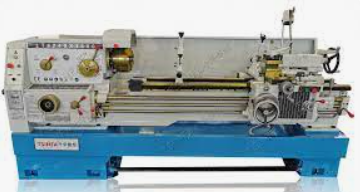A manual lathe, also known as a conventional lathe or engine lathe, is a type of machine tool used for shaping and machining various materials such as metal, wood, or plastic. It is operated manually by an operator who controls the movement of the cutting tool and the workpiece.
Here are some key components and features of a manual lathe:
1、Bed: The bed is the main horizontal base of the lathe. It provides support and rigidity to the other components.
2、Headstock: The headstock is located on the left end of the lathe and houses the main spindle. It provides the rotational power to the workpiece.

3、Spindle: The spindle is mounted in the headstock and rotates the workpiece. It usually has a chuck attached to hold the workpiece securely.
4、Tailstock: The tailstock is located on the right end of the lathe and provides support to the other end of the workpiece. It can be moved along the bed to accommodate different workpiece lengths.

5、Carriage: The carriage is the assembly that holds the cutting tool and moves along the bed horizontally. It consists of the saddle, cross-slide, and toolpost.
6、Saddle: The saddle is mounted on the bed and can move longitudinally along the bed. It carries the cross-slide and the compound rest.
7、Cross-slide: The cross-slide is mounted on the saddle and moves perpendicular to the spindle axis. It carries the toolpost and allows for precise transverse movement of the cutting tool.

8、Compound rest: The compound rest is mounted on the cross-slide and provides angular adjustment for cutting tapers and angles.
9、Toolpost: The toolpost holds the cutting tool and allows for quick changes of different tooling.
10、Feed and Lead Screw: The feed screw is used for longitudinal movement of the carriage, while the lead screw is engaged for thread cutting.
11、Handwheels: Handwheels are used to manually control the movement of the carriage, cross-slide, and compound rest.

To operate a manual lathe, an operator manually adjusts the various components to position the workpiece, selects the appropriate cutting tool, and controls the cutting operations. The operator feeds the cutting tool into the rotating workpiece to remove material and shape it as desired.
It's worth noting that manual lathes require skill and experience to operate effectively and produce precise workpieces. In recent years, computer numerical control (CNC) lathes have become more prevalent, offering automated and programmable operation for increased precision and efficiency.





 Customer service 1
Customer service 1  Customer service 2
Customer service 2